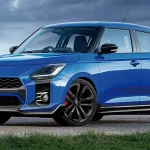Driving : A Quick Guide to Designing Car Interfaces

UX (client experience) and UI (UI) plan are both basic with regards to planning connection points implied for vehicles. Wellbeing, straightforwardness, and ease of use are only a portion of the significant viewpoints to consider while planning for the numerous particular and complex use cases related with vehicles and transportation. Driving : A Quick Guide to Designing Car Interfaces.
Here we’ll go through a couple of best practices to remember while planning these mind boggling connection points.
1. Prioritize safety for Driving : A Quick Guide to Designing Car Interfaces
Security ought to constantly be at the very front while planning connection points for vehicles. This implies limiting interruptions, making controls and shows smoothed out and straightforward, use, and reliably giving clear and brief helpful criticism to the driver.
2. Keep it simple for Driving : A Quick Guide to Designing Car Interfaces
Vehicles are exceptionally mind boggling machines, and drivers are many times playing out numerous undertakings immediately while on the way. It’s fundamental for keep these points of interaction basic and natural. Clear and simple to-understand message and designs are fundamental to accomplish this. Attempt to try not to utilize language or specialized terms, and ensure that all controls are not difficult to situate on the screen and use.
3. Use natural language for Driving : A Quick Guide to Designing Car Interfaces
Something else that ought to be considered is utilizing regular language handling. This can be utilized to make vehicle interfaces significantly more easy to use. For instance, permitting drivers to utilize voice orders to control different frameworks in the vehicle can decrease interruptions and make it more straightforward to utilize the vehicle’s different elements.
4. Consider the context
The setting where the vehicle is being utilized ought to likewise be considered while planning points of interaction. For instance, a driver in a high-stress/high velocity circumstance will have various necessities contrasted with an in a more loosened up driver circumstance. Observe the various circumstances and use cases a driver might need to ensure it’s represented in the plan.
5. Make it customizable
Everybody has various inclinations with regards to utilizing innovation, so it’s essential to make vehicle interfaces adaptable. This could incorporate permitting drivers to alter the text dimension, variety plan, subject, and format of the point of interaction. Likewise, consider giving various modes like game mode or eco mode that will change the connection point to suit that particular driver’s requirements.
6. Test, test, test
Prior to delivering a vehicle connection point to people in general, it’s pivotal to test it completely with a different gathering of clients. This will assist with distinguishing any issues or convenience issues and permits architects to assemble criticism and see how genuine clients communicate with the connection point. We might distinguish convenience issues like confounding menu structures or difficult to-understand shows. We can then make the fundamental changes before the item is delivered.
By remembering these prescribed procedures, fashioners can make vehicle interfaces that are protected, simple to utilize, and generally give a pleasant encounter to the driver.


